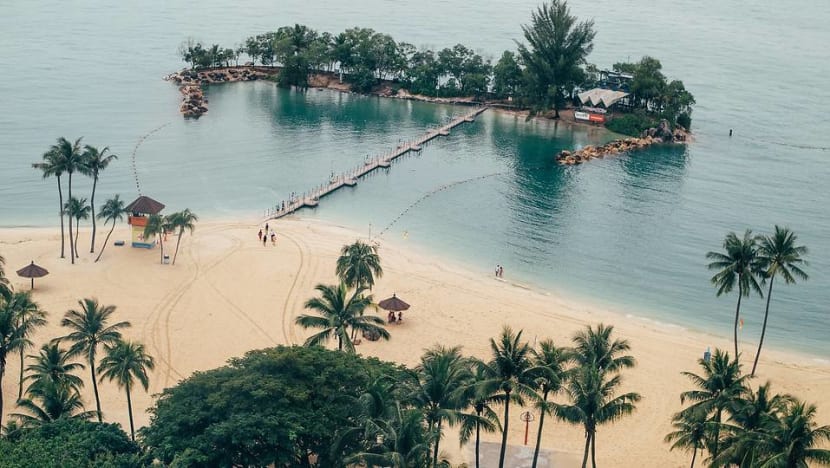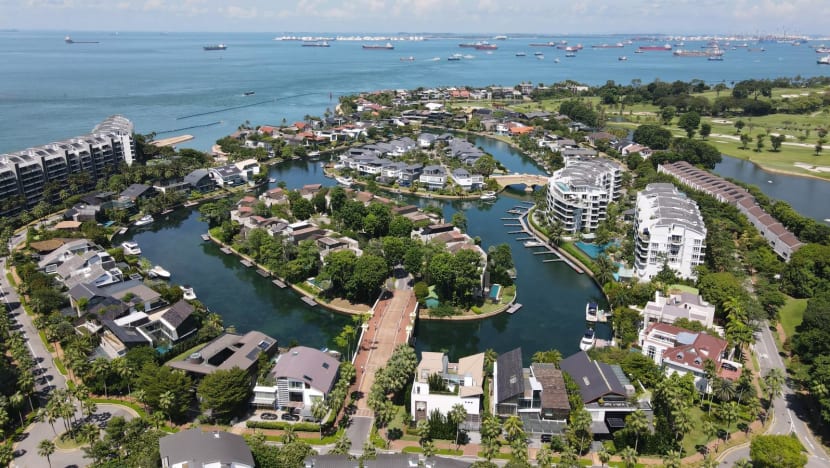Barrages, artificial coral reefs among suggestions to safeguard Sentosa’s coastline
The resort island faces threats from climate change, with experts warning that rising sea levels could swallow parts of its iconic 16km shoreline decades from now.


This audio is generated by an AI tool.
SINGAPORE: Sentosa is a popular destination for family-friendly activities and beach holidays for both locals and tourists alike.
But the resort island faces threats from climate change. Experts warn that rising sea levels could swallow parts of its iconic 16km shoreline, decades from now.
Particularly vulnerable is its beachfront coastline with soft golden sand spanning about 2km - home to numerous attractions, eateries and beach clubs.
The government earlier this month announced its latest efforts to help Singapore better prepare for the impacts of climate change.
These include studies starting next year that will determine coastal protection solutions along Singapore's south-west coast and Sentosa.
WHAT CAN BE DONE?
Experts told CNA that planting artificial coral reefs, installing barrages and beach nourishment are some solutions that could safeguard Sentosa island.
On days when high tides coincide with stormy weather, sea levels could rise even higher due to the stronger waves.
Experts suggested that one nature-based solution could involve installing artificial corals out at sea, acting as a barrier to protect the coastline.
They could help break up large waves before they hit the shore, especially on stormy days, preventing beach erosion and protecting the coastline from the relentless forces of nature.
Another way to break the waves would be installing barriers between islets, which could be raised or lowered depending on tide levels.
An alternative potential solution is replenishing the sand on Sentosa's beaches and gradually raising them in line with the rising sea levels.
URBAN AREAS
Experts said Sentosa requires different solutions deployed for different areas, as the island serves a myriad of purposes that include theme parks, golf courses, hiking trails, luxury hotels and residential properties.

For instance, at the marina in Sentosa Cove, which is lined with waterfront businesses and homes alongside berths for yachts, its passageway to the sea should be kept safe for vessels to pass through, said Professor Adrian Law.
“There must be an open connection to the sea,” added the executive director of the National University of Singapore’s Coastal Protection and Flood Resilience Institute.
“I think the most obvious adaptation measure would be to raise the land level around the marina, so that it can cope with the future sea level rise."
Mr James Lam, chairperson of the Singapore Water Association’s coastal protection chapter, also suggested converting fixed pontoons to floating ones that can adapt to fluctuating water levels.
CONCERNS REMAIN
However, Singapore's limited sea space may need some innovative approaches. As a global shipping hub, vessels are usually anchored off the coast of the nation.
Mr Lam said this means measures taken to protect the coastline cannot encroach too far into the sea space.
“Singapore sea space is actually pretty tight, given that there's anchorages, navigational fairways with many ships (coming) through Singapore,” he told CNA.
“The trade-off of putting in (external) barriers that are offshore could potentially impact marine navigation that's just off our shoreline.”
Uncertainties also remain over how drastic measures will have to be and when they should be implemented, with economic and environmental costs needed to be looked at.
The site-specific study led by Sentosa Development Corporation will start in 2026 in a bid to answer these questions.

















